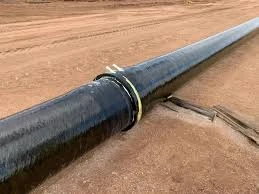
-
 Afrikaans
Afrikaans -
 Albanian
Albanian -
 Amharic
Amharic -
 Arabic
Arabic -
 Armenian
Armenian -
 Azerbaijani
Azerbaijani -
 Basque
Basque -
 Belarusian
Belarusian -
 Bengali
Bengali -
 Bosnian
Bosnian -
 Bulgarian
Bulgarian -
 Catalan
Catalan -
 Cebuano
Cebuano -
 China
China -
 China (Taiwan)
China (Taiwan) -
 Corsican
Corsican -
 Croatian
Croatian -
 Czech
Czech -
 Danish
Danish -
 Dutch
Dutch -
 English
English -
 Esperanto
Esperanto -
 Estonian
Estonian -
 Finnish
Finnish -
 French
French -
 Frisian
Frisian -
 Galician
Galician -
 Georgian
Georgian -
 German
German -
 Greek
Greek -
 Gujarati
Gujarati -
 Haitian Creole
Haitian Creole -
 hausa
hausa -
 hawaiian
hawaiian -
 Hebrew
Hebrew -
 Hindi
Hindi -
 Miao
Miao -
 Hungarian
Hungarian -
 Icelandic
Icelandic -
 igbo
igbo -
 Indonesian
Indonesian -
 irish
irish -
 Italian
Italian -
 Japanese
Japanese -
 Javanese
Javanese -
 Kannada
Kannada -
 kazakh
kazakh -
 Khmer
Khmer -
 Rwandese
Rwandese -
 Korean
Korean -
 Kurdish
Kurdish -
 Kyrgyz
Kyrgyz -
 Lao
Lao -
 Latin
Latin -
 Latvian
Latvian -
 Lithuanian
Lithuanian -
 Luxembourgish
Luxembourgish -
 Macedonian
Macedonian -
 Malgashi
Malgashi -
 Malay
Malay -
 Malayalam
Malayalam -
 Maltese
Maltese -
 Maori
Maori -
 Marathi
Marathi -
 Mongolian
Mongolian -
 Myanmar
Myanmar -
 Nepali
Nepali -
 Norwegian
Norwegian -
 Norwegian
Norwegian -
 Occitan
Occitan -
 Pashto
Pashto -
 Persian
Persian -
 Polish
Polish -
 Portuguese
Portuguese -
 Punjabi
Punjabi -
 Romanian
Romanian -
 Russian
Russian -
 Samoan
Samoan -
 Scottish Gaelic
Scottish Gaelic -
 Serbian
Serbian -
 Sesotho
Sesotho -
 Shona
Shona -
 Sindhi
Sindhi -
 Sinhala
Sinhala -
 Slovak
Slovak -
 Slovenian
Slovenian -
 Somali
Somali -
 Spanish
Spanish -
 Sundanese
Sundanese -
 Swahili
Swahili -
 Swedish
Swedish -
 Tagalog
Tagalog -
 Tajik
Tajik -
 Tamil
Tamil -
 Tatar
Tatar -
 Telugu
Telugu -
 Thai
Thai -
 Turkish
Turkish -
 Turkmen
Turkmen -
 Ukrainian
Ukrainian -
 Urdu
Urdu -
 Uighur
Uighur -
 Uzbek
Uzbek -
 Vietnamese
Vietnamese -
 Welsh
Welsh -
 Bantu
Bantu -
 Yiddish
Yiddish -
 Yoruba
Yoruba -
 Zulu
Zulu
essential tools for working in coal mines and enhancing ...
Essential Tools for Working in Coal Mines and Enhancing Safety Standards
Coal mining is an essential industry that fuels economies around the world, providing energy and resources for various sectors. However, the nature of this work involves significant risks, making the use of essential tools and technologies crucial for both productivity and safety. Understanding and utilizing the proper tools can enhance safety standards and improve operational efficiency in coal mines.
Personal Protective Equipment (PPE)
First and foremost, Personal Protective Equipment (PPE) is a non-negotiable aspect of coal mining. Miners are exposed to hazardous conditions, including respiratory hazards, falling debris, and electrical risks. Essential PPE includes hard hats, steel-toed boots, gloves, ear protection, and high-visibility clothing. Respirators or masks equipped with filters are particularly vital, as coal dust can have long-lasting effects on lung health. Ensuring that every miner is equipped with the necessary PPE is foundational to maintaining a safe work environment.
Mining Equipment
In terms of machinery, several specialized tools are essential for effective coal extraction. Continuous miners, for instance, are vital for underground mining as they allow for the efficient removal of coal from seams. These machines consist of sharp, heavy-duty bits that cut into the rock, and they are equipped with gathering arms that transport the mined coal to a shuttle car. Following that, shuttle cars are critical for moving coal from the mining face to the conveyor system, ensuring a continuous flow of material.
Conveyor Systems
Conveyor systems are another essential tool in coal mines, facilitating the transportation of mined coal to surface facilities or processing stations. Modern conveyor systems are designed with safety features such as emergency stop buttons and automated shut-off mechanisms to minimize workplace accidents. Regular maintenance and inspections of conveyor systems are vital to prevent breakdowns, as equipment failure can lead to significant safety hazards.
essential tools for working in coal mines and enhancing ...

Communication Devices
Effective communication tools are also indispensable in coal mining operations. Miners often work in isolated conditions, making two-way radios an essential tool for maintaining contact with surface personnel. Advanced communication systems, such as mesh networking and digital devices, have enhanced miners' ability to stay in contact, share critical information, and respond promptly in emergencies.
Gas Monitoring Systems
Furthermore, gas monitoring systems are crucial for working safely in coal mines. These systems detect hazardous gases such as methane and carbon monoxide before they reach dangerous levels, allowing miners to evacuate or take appropriate safety measures. Advances in sensor technology have made these systems more reliable and responsive, ensuring a safer working environment.
Training and Safety Programs
In addition to equipment and tools, ongoing training and safety programs are critical for the well-being of mine workers. Organizations must ensure that all personnel are educated on using tools correctly and understanding safety protocols. Regular drills and safety assessments can significantly reduce the likelihood of accidents.
In conclusion, the combination of essential tools ranging from PPE to advanced technological devices defines the standards of safety in coal mining. By investing in the right equipment and continuous training, the industry can enhance safety measures, protect workers, and optimize productivity in the demanding environment of coal mines. Ensuring a commitment to safety not only benefits the miners but also promotes a sustainable future for the coal industry.
Latest news
-
Exploring the Benefits of Top Hammer Drifter Rods for Enhanced Drilling PerformanceNewsJun.10,2025
-
High-Precision Fiberglass Winding Machine for GRP/FRP Pipe Production – Reliable & Efficient SolutionsNewsJun.10,2025
-
FRP Pipes & Fittings for Shipbuilding - Corrosion-Resistant & LightweightNewsJun.09,2025
-
Premium FRP Flooring Solutions Durable & Slip-ResistantNewsJun.09,2025
-
Premium Fiberglass Rectangular Tanks Durable & Lightweight SolutionNewsJun.09,2025
-
Tapered Drill String Design Guide Durable Performance & UsesNewsJun.09,2025









